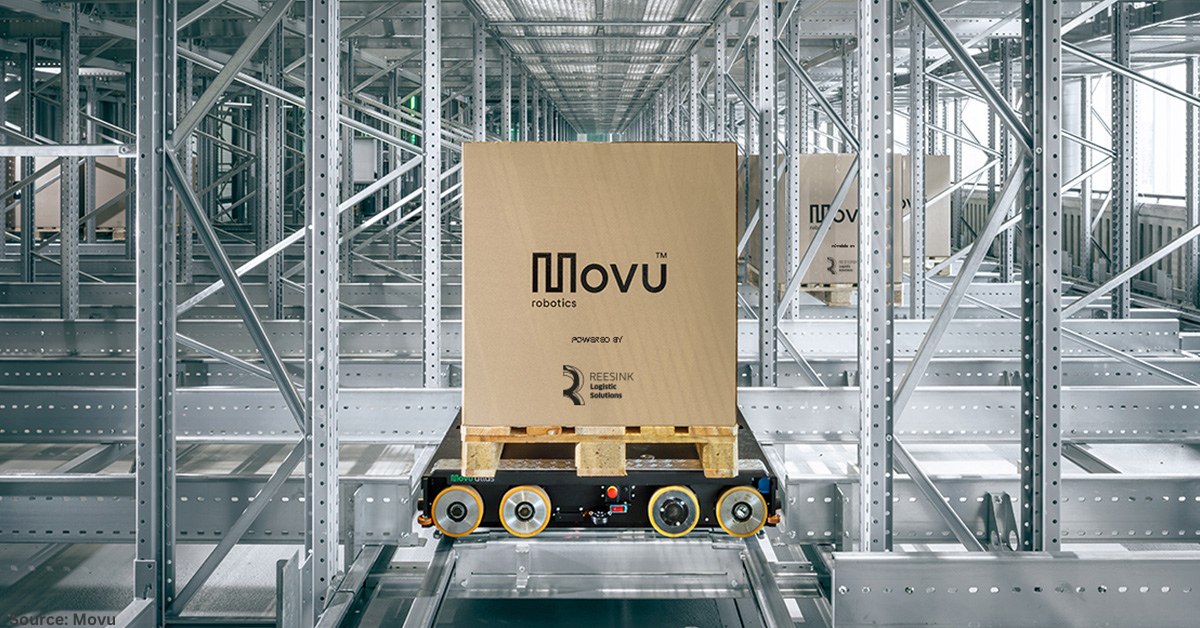The effects of multiple disruptions have undoubtedly wreaked havoc across the supply chain landscape — and continue to persist to this day. But as Supply Chain Channel’s thought leaders can all agree, there are ways to not only survive each challenge, but also regain control of your operations and thrive.
Check out the opinion content contributed to our channel from our community of supply chain subject matter experts:
Rolling with supply chain disruption
With the past few years being fraught with disruption after disruption, it has become clear that we are in era of unpredictability. Even more clear is the need for businesses to quickly learn to navigate these challenges. Prological Founder and Managing Director Peter Jones expounds on this in his article Bankrupt beauty: Lessons from Revlon’s supply chain failures, one of the biggest bankruptcy stories of the year.
No one knows for certain how long the problems with supply chains will last, as new disruptions continue to transpire. But Retail Directions CEO Andrew Gorecki said businesses can still overcome the supply challenges they face, while staying in stock and ensure they can still provide what their customers want, when and how they want it. To do this, he suggest three key measures that retailers can take in Supply Chains: How to navigate the era of unpredictability.

Challenges of fulfilment and last-mile
There’s a lot of buzz around micro-fulfilment at the moment, with many organisations exploring it as a solution to increase speed to market and raise the bar with regards to last-mile delivery. But what exactly is micro-fulfilment it and is it right for your operation? Prological’s Peter Jones discusses this in What is micro-fulfilment and is it right for your operation?
As the appetite for online shopping continues to accelerate, same-day delivery has gone from a ‘nice to have’ to an essential capability for Australia’s leading retailers. In his article, Peter Jones also talks about the unique challenges this presents and ways to make Same-day delivery: from fantasy to reality.
David Oldridge, Joint-Managing Partner at BPS Global Australia, also offers his excellent insights on the role of micro-fulfilment in the pursuit of accurate, quick, and reliable online delivery. In his article Micro-fulfilment: is it time to jump on the trend?, he writes that as consumers place more emphasis on fast, convenient, and cheap delivery, micro-fulfilment centres are set to become more and more popular.
Logistics
Despite the robust Australian logistics industry, the COVID-19 pandemic was not something that anyone had planned for. In Australian logistics, the road ahead, Ofload CEO Geoffroy Henry talks about how supply chains in the nation have been disrupted in many ways, both large and small, and what is needed for the industry to face these potholes and speedbumps.

Dealing with inflation in the supply chain
The global market is continuing to grapple with rising freight costs due to the impact of the pandemic, and recently the challenge Russian-Ukraine war. So, what can you do? Prological’s Peter Jones says in his article How can you combat rising freight costs? that the market has shifted, and it’s now about looking inside your operation to unlock freight cost savings.
For retailers, Retail Directions’ Andrew Gorecki writes that if they are going to get to grips with inflation, they will firstly have to understand its mechanics, which he offers five general guidelines to in his article In 2022 retailers must understand the mechanics of inflation to stay viable.
Effective leadership
Another highlight for this year is how strong, effective leadership shines through any challenge. When dealing with cultural divides, author Cynthia Dearin of Dearin & Associates teaches in Bridging the cultural divide – 3 tips for companies operating internationally that once you recognise that you need to get prepared for cultural differences in the same way that you prepare for every other part of your international business strategy, you get work done.
In the lens of customer experience, Retail Directions Director of Commercial Operations Martyn Cole poses the question Are retailers underestimating their employees? In his opinion piece, he explains why it is important to prioritise employees’ experience in the pursuit of delivering amazing customer experience.
Rise of e-commerce
If you sell consumer products and you’re keen to launch into the international space, e-commerce is a great way to test overseas markets, with minimal risk, from the comfort of your own home or office. That’s what international business strategist and author Cynthia Dreain writes in Winning the International E-Commerce Game: Marketplaces or E-Commerce Sites?, where she also offers a guideline on how to choose between marketplaces and e-commerce sites.
Automation
Automation is changing the supply chain landscape. With today’s customer wanting hyper convenience, flexibility and faster delivery times, this puts unprecedented pressure on retailers. Malcolm Druce, Managing Partner at BPS Global Australia talks through the increasing role of agile automation in responding to the changing needs of the consumer in his article, Australia’s e-commerce boom: is agile automation the answer?

Retail supply chain
Australia’s retail industry has been in a permanent state of disruption over the past couple of years. In his article Navigating the Australian retail industry: Trends, challenges and opportunities, Australian Retailers Association CEO Paul Zahra expounds on the challenges the industry is facing and the increasingly vital role of technology and sustainability.
While retail is omnipresent, so are rising costs. In his article Why retailers need to take back control of their channels, Retail Directions’ Martyn Cole explains why retailers need to regain control of their agendas and understand the impact on their margins.
Risk Management
Two years since the onset of the pandemic, some of the major supply chain disruption has barely started to ease. The obsession with risk management is here to stay, says Bastian Consulting and partners. Tony Richter expounds more on this, as well as supply chain resilience and what tools are needed to face the challenges in his article Taking back control – why risk management is here to stay.
Shipping
The global shipping industry was undoubtedly one of the most immediately affected from these last few volatile years, from shipping delays to rising costs. Rachael Budd, CEO at Transolve Global, outlines the narrative of consumer demand throughout the pandemic years and discusses what’s in store for global shipping in her article Has global shipping finally turned the corner?
Sustainability in the supply chain
Purposeful and responsible leadership from the very top of the organisation is essential for a truly sustainable company, supply chain included. Dr Allinnettes Adigue, Head of the ASEAN Regional Hub of the Global Reporting Initiative tackles this more in her piece Getting to grips with sustainability in the supply chain.

Selecting an MHE Partner
There’s a plethora of automation and material handling equipment (MHE) vendors and choosing the right partner can be a complex and difficult space to navigate. In his article, Top Tips for Selecting an MHE Partner, Prological Senior Associate John Mills provides his top tips for choosing your next MHE partner.
Managing data
Supply chain teams are drowning in data, and they often don’t have the time and tools required to modernise supply chain design and management. In his article Ensuring Resilience When Supply Chain Teams are Drowning in Data., Hitachi Vantara’s Owen Keates explains Phase 1 of Modernising (or Establishing) your Supply Chain Control Tower to help ensure your supply chain can handle whatever’s next.
Warehousing
With Australia now the tightest industrial property market in the world, it’s not as easy as it once was to secure a new facility. David Oldridge, Managing Partner at BPS Global Australia, offers tips on getting the most out of an existing facility when expanding or moving is not an option in How to make the most of your industrial footprint.
Preparing for peak period
It’s never too early to start your preparations for the next surge in demand. According to BPS Global Australia’s Malcolm Druce, as soon as the flame from the New Year’s Eve fireworks fade, Today’s the day for building the foundations of your next peak period.
Retail Directions’ Adrian Smith also offers six key topics for retailers to think about, not only to help them meet peak demand, but to deliver consistently for their customers and staff all year round in his piece Is preparing for peak keeping you awake at night?
Supply chains keep the world moving, thus it is critical the industry grow together. This year has been filled with so much learnings and insights. As we move on to the next, Supply Chain Channel will be ready to continue connecting, empowering and upskilling our supply chain industry with knowledge.
For updates and access to the whole list of op-eds, visit our Opinion page. Send us a message today if you’d like to contribute to our learning community.



























































Follow us on social media